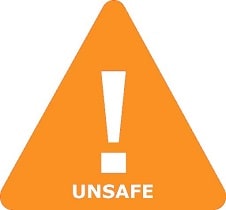Is EC 204-825-9 Safe in Breastfeeding
Question
I am a breastfeeding mother and i want to know if it is safe to use EC 204-825-9? Is EC 204-825-9 safe for nursing mother and child? Does EC 204-825-9 extracts into breast milk? Does EC 204-825-9 has any long term or short term side effects on infants? Can EC 204-825-9 influence milk supply or can EC 204-825-9 decrease milk supply in lactating mothers?
EC 204-825-9 lactation summary

- DrLact safety Score for EC 204-825-9 is 5 out of 8 which is considered Unsafe as per our analyses.
- A safety Score of 5 indicates that usage of EC 204-825-9 may cause serious side effects in breastfed baby.
- Our study of different scientific research indicates that EC 204-825-9 may cause moderate to high side effects or may affect milk supply in lactating mother.
- Our suggestion is to use safer alternate options rather than using EC 204-825-9 .
- It is recommended to evaluate the advantage of not breastfeeding while using EC 204-825-9 Vs not using EC 204-825-9 And continue breastfeeding.
- While using EC 204-825-9 Its must to monitor child for possible reactions. It is also important to understand that side effects vary largely based on age of breastfed child and time of medication in addition to dosage.
- Score calculated using the DrLact safety Version 1.2 model, this score ranges from 0 to 8 and measures overall safety of drug in lactation. Scores are primarily calculated using publicly available case studies, research papers, other scientific journals and publically available data.
Answer by Dr. Ru: About EC 204-825-9 usage in lactation
It is a halogenated hydrocarbon product. A fluid industrially used in dry cleaning, oil and stain removal. Appropriate ventilation is required to keep TLV-TWA less than 50 ppm (339mg/m3).It is irritant to skin and mucous surfaces, and a CNS depressant substance. Accidentally occurring exposure is very dangerous to the mother (TLV-STEL must be less than 200 ppm=1357mg/m3). In case of such exposure, the mother should stop nursing the baby for the next 15 days (a case of one infant who developed severe jaundice after having been nursed by a recent exposed women). It is worth to test levels on breast milk.
Alternate Drugs for Contaminant, Environmental Pollutant
Hydroquinone(Low Risk)
Aflatoxin(Low Risk)
Aniline(Unsafe)
Polybrominated(Unsafe)
Bromum(Low Risk)
Cadmium(Low Risk)
Cobalt(Safe)
DDT(Low Risk)
Dieldrin(Low Risk)
Formaldehyde(Unsafe)
Hexachlorobenzene(Unsafe)
White-Spirit(Unsafe)
Mercury(Low Risk)
Nitrate(Low Risk)
Lead(Unsafe)
Tetrachloroethylene(Unsafe)
Chromium Trioxide(Unsafe)
Aminobenzene(Unsafe)
Perchloroethylene(Unsafe)
Phenylamine(Unsafe)
Hydroquinol(Low Risk)
Methanal(Unsafe)
Methylene oxide(Unsafe)
1,4-Benzenediol(Low Risk)
Quinol(Low Risk)
Formalin(Unsafe)
Formol(Unsafe)
